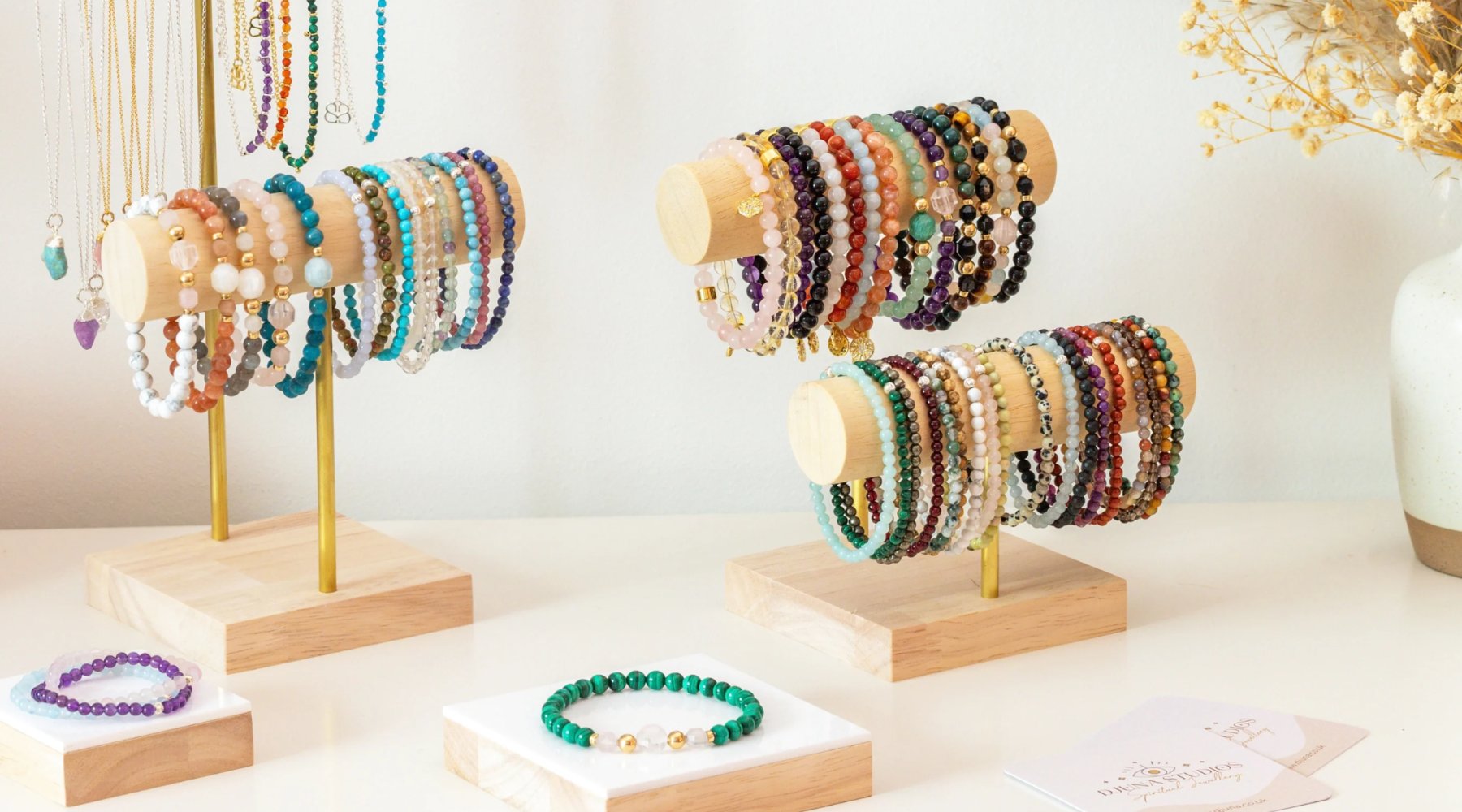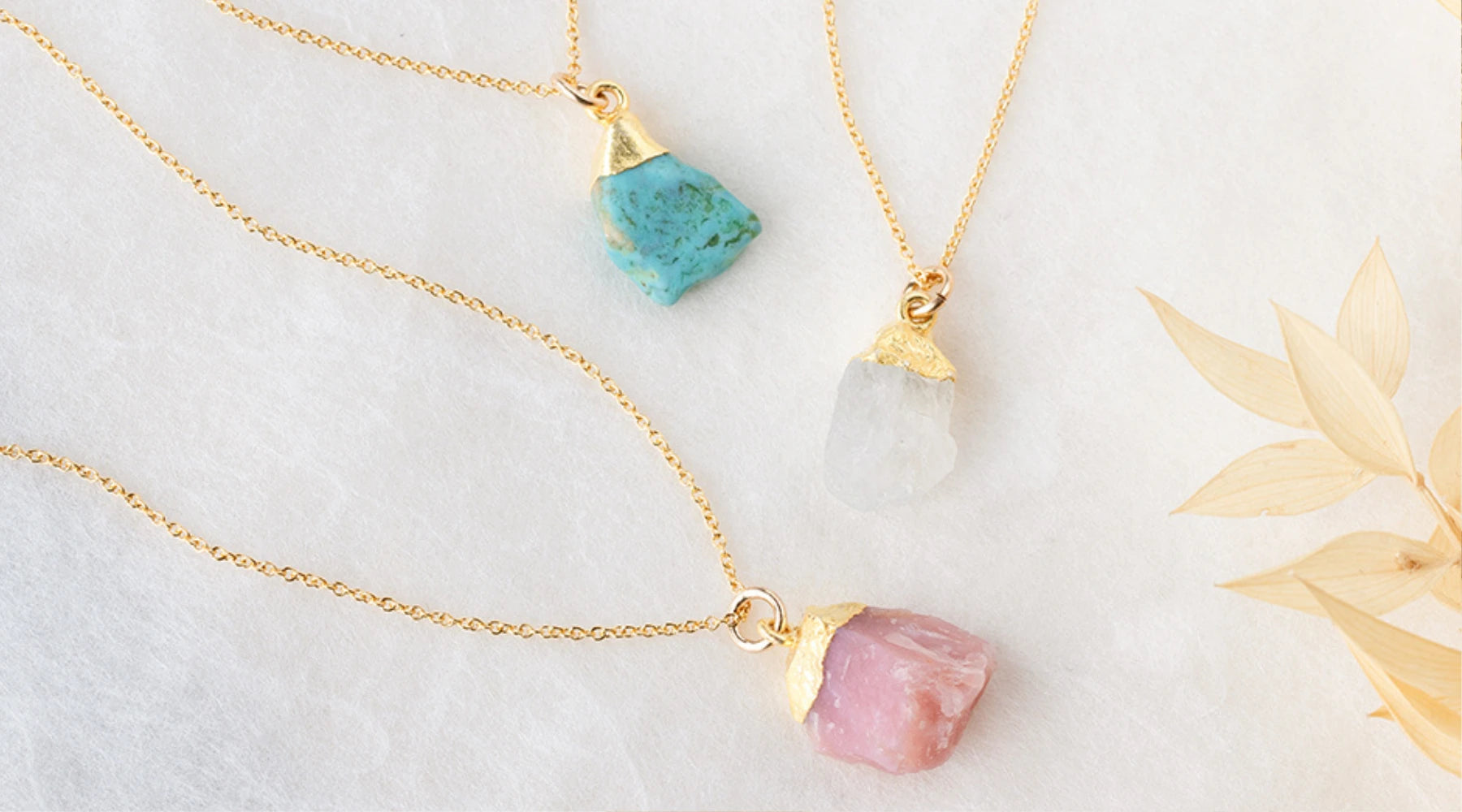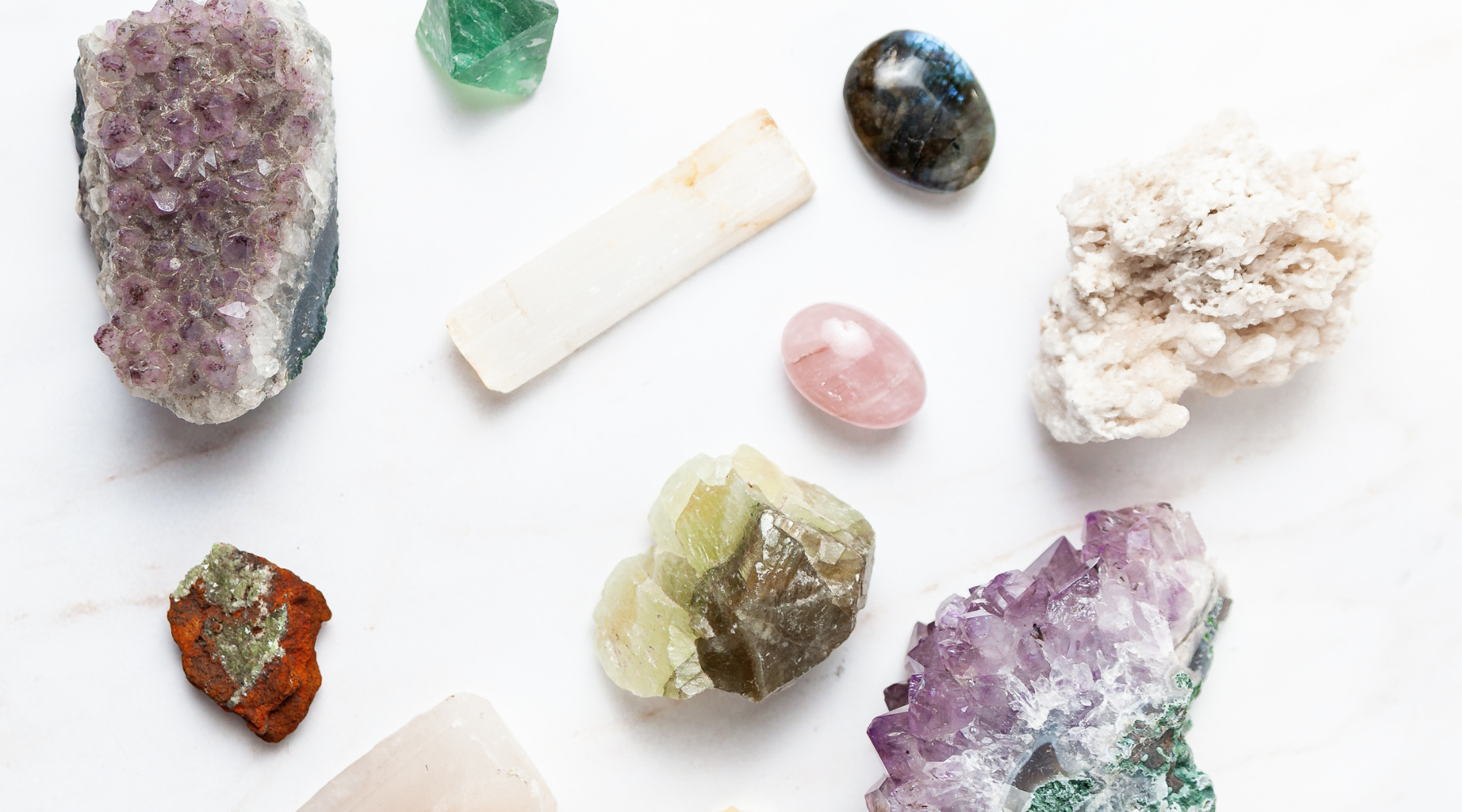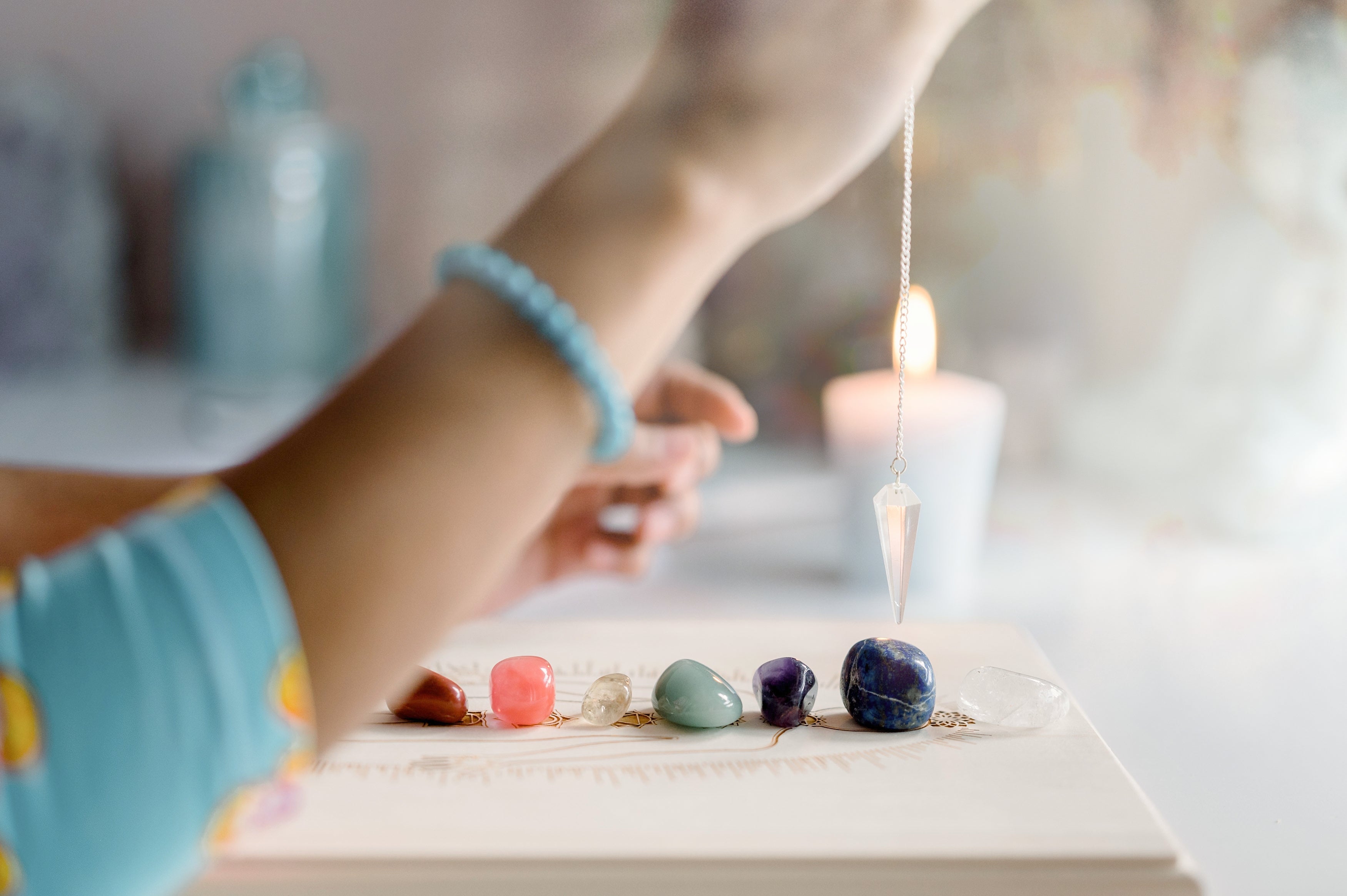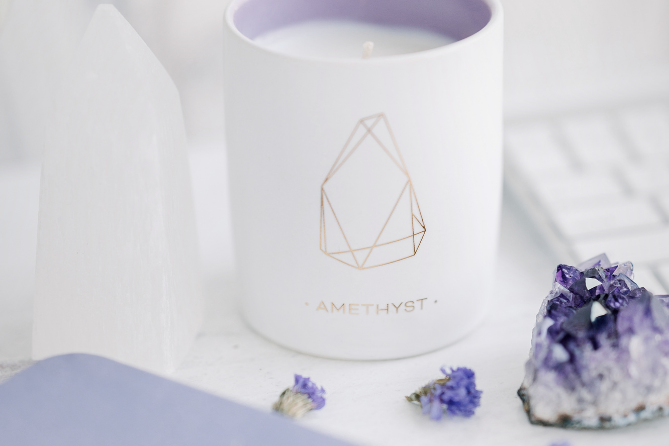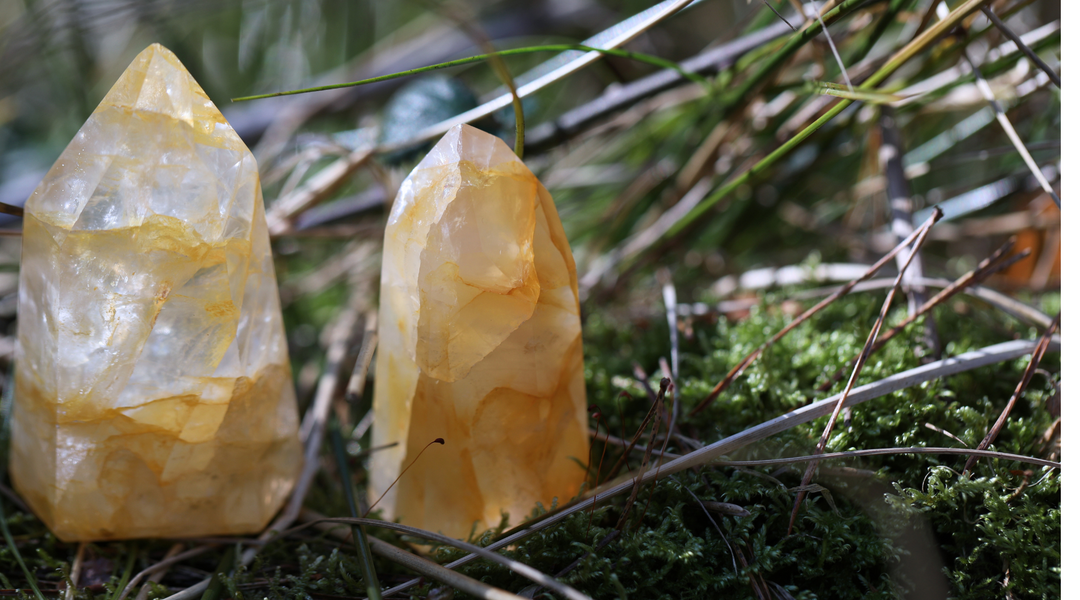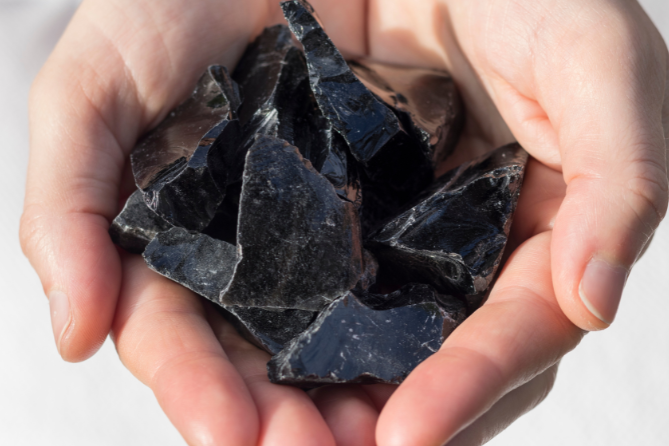Distinct in appearance, the characteristic purple of natural amethyst blends into shades of indigo and white. When polished to perfection, the quartz-like hexagonal crystal takes on a classic and vitreous look.
Please read on to learn more about the meaning of amethyst. Below, we also explore its surprisingly numerous benefits and healing properties.

Amethyst meaning
A long time favourites with admirers of semi-precious stones, this pretty and potent gem is beautifully intriguing. While looking gorgeous, amethyst helps its wearer to stay grounded. Fittingly, the word comes from the Greek amethystos, which means not intoxicated.According to historical accounts, some ancient Greeks used to wear an amethyst stone, hoping that they would not fall over in an alcohol-induced stupor after occasional overindulgence. Whether one chooses to put this to the test (or not!), other magical tales or myths tell us more. Some suggest the semi-precious gem's violet hue originates from Dionysus, an ancient god who chastised an innocent virgin.
As the story goes, in response to the distraught virgin's prayers, the goddess Diana turned her into a shimmering stone to protect her from this misplaced wrath. After realising the mistake and unnecessary anger, Dionysus shed blood-red wine tears. These intensely coloured tears of repentance soaked into the glittering pale white stone and gave it a gentle purple hue.
Of course, while the tale is quite fascinating, there is certainly no doubt that the lavender and purple hues of this softly glowing amulet captivate the eye. When polished and used as a luminescent and attractive worry stone, the gem has strong links to the crown chakra or third eye. Thanks to its potent properties, amethyst bridges the divine with the physical world.

Benefits of amethyst
Rarely constant, this crystal quartz changes with different shades of light and even ambient temperature. It offers wearers a variety of physical, emotional and spiritual benefits.In today's constantly connected and overly busy world, the captivating shimmer of polished amethyst produces a spectrum of tranquillising shades from pale pink through pastel violet to deep purple. It acts as the perfect antidote, helping to prevent muddled decisions and heightened emotional responses.
Respected for its healing powers, the spiritually aware often recommend this violet gemstone for the sense of control, contemplation and clear thinking that it provides. Some devotees even vouch for its ability to help maintain sobriety and reduce unhealthy levels of alcohol consumption.

Amethyst healing properties
Linked to rest, recovery and soothing sleep, amethyst supports the healthy regeneration of cells and a balanced hormone system within the body. Followers vouch for its ability to balance body metabolism and endocrine production. Additionally, they describe how wearers will benefit from inner harmony and improved mental balance. Crucially, it could reduce levels of the stress hormone cortisol. Some wearers report healing, deep slumber and restful, restorative sleep.
Similarly, holistic healing gurus have suggested that amethyst can provide valuable help to those struggling with nights of insomnia. It may be of value in reducing the effects of migraine, too.
By providing a boost for the body's auto-immune system, the gem helps maintain fitness and readiness to fight off disease. Thanks to its purifying characteristics, it supports the immune system through the challenges of modern life and hectic schedules, working from deep inside the organism to the skin's surface.
Emotional benefits
As well as promoting feelings of clarity and calm in the world which can sometimes feel chaotic, amethyst can help those who are experiencing sensations of loss. By centring and stabilising the emotions, the stone aids recovery. It empowers the individual, enabling him or her to feel soothed, grounded and comforted. In times of uncertainty and change, its divine properties support wearers, freeing them from unnecessary fear of the unknown.Spiritualists consider that amethyst pacifies people who may sometimes be prone to anger. As it dissipates rage, it taps into the individual's natural reserves of inspiration, promoting focus and a sense of calm. In turn, this precious gem enables creative ideas and solutions to come through, clearing away mental cobwebs. It fosters transformation while nurturing courage, along with the fortitude that is necessary to make difficult decisions.
For all the above reasons, amethyst is a great choice to benefit family dynamics and personal relationships.
Metaphysical properties
Amethyst activates the third eye, recognised in eastern doctrines as the spiritual hub of each person. Thus, it brings about enlightenment – in contrast to blocked perceptions that might otherwise cause anxiety, depression or cynicism. Instead, the stone's sacred energy allows the third eye to tap into one's natural and acquired wisdom.As a talisman of success, the violet stone enables the imagination to sparkle and the intuition to function correctly, thus guiding the wearer through life. According to experienced wearers, amethyst's powers promote empathy.
Significantly, the gem tends to ensure that the wearer remains grounded and connected to his or her own spiritual journey, instead of getting lost in other people's problems. In this way, one can reduce the risk of suffering sadness, compassion fatigue and unwelcome burnout.
Locating the stone in a room where there is tension can help to bring about healing and tranquillity, whether in an office or a home. When used to good effect in the workplace, it promotes concentration and inspiration while reducing procrastination. As an ideal complement to Yin energy, Feng Shui practitioners cite amethyst for its ability to dissipate negativity and transform it into positive vibrations.
Usefully, amethyst is ideal for meditation. It helps practitioners to enter into a deeper state of relaxation. When held in the left hand, it reduces tension and brings healing. Conversely, in the right hand, the crystal radiates its energy into the local surroundings to benefit the working or living environment.

The zodiac: amethyst meaning
In terms of the zodiac, amethyst is the birthstone for Aquarius, the water bearers in this world. Its purple hue denotes the month of February and the chilly winds at the end of winter. It looks ahead to light, calm and love in early spring.Typically, Aquarians enjoy respect for their deep insight, intellect and assertiveness. Usefully, the stone helps people born under this sign to maintain good communication with others – and, importantly, not to overanalyse.
Also linked with the planet of Uranus and the mythical god of the sky and heavens, amethyst embraces personal freedom.
Amethyst Jewellery
Amethyst is simple to wear as jewellery. Your choices include attractively polished bangles, bracelets, necklaces, earrings and rings.
It also works well as a worry stone, pressed against the skin to absorb its vibrations and benefit from the potent healing properties.
To this day, amethyst so remains popular with Buddhists in Tibet. In the past, devotees included Catherine the Great, who beautified herself with the stone. The Ancient Egyptians used it to adorn mummified bodies to protect souls as they passed into the afterlife.
The colour purple has always been perceived as expensive and associated with royalty. Purple was the colour of kings because the dye to make it, extracted from the tiny gland of a shellfish, was a laborious process and made purple dye more valuable than gold.
Best sellers from our shop...
 |
||
 |
 |
Colours and Properties
Colour-wise, the possibilities range from the deepest hues of purple to a pastel shade of violet, to complement the blue of a summer sky.Nowadays, there are amethyst mines in most continents, from Siberia's freezing plains through Canada to the Americas and Brazil's tropical rainforests. Some southern African countries and Indian mines also produce rough stone. In Europe, the French version is light pink and known as Rose de France or lavender amethyst. It enjoyed wide popularity in England during the eighteenth century.
For a poetic depiction of amethyst, we could find little better than reclusive American poet Emily Dickinson's eloquent poem I'll Tell You How the Sun Rose. In its first two stanzas, she uses slanting rhyme to paint a beautifully vivid picture of dawn. Fittingly, the first eight lines mention the colour of amethyst as they contrast daybreak with the silhouette of steeples and hills, with birdsong to accompany the sunrise.
Like most poets and prose writers, Dickinson wrote about what intrigued her. Known to be a keen observer, she often used images to probe the wonders of nature as well as self-identity, love and immortality.
Summary
So, there you have it. Amethyst's multiple properties help one to find serenity, stability and strength in a sometimes complicated world. It supports the cleansing and detoxification of the body while boosting clear thinking. Finally, this semi-precious stone promotes change as and when necessary, through clear vision and illumination.If' you've time to discover more about Amethyst take a look at this amazing video... it shows Amethyst Crystal Minining on another level!




